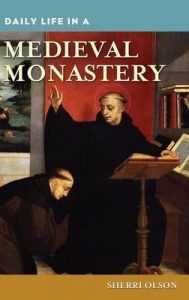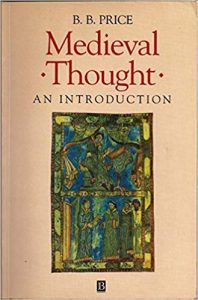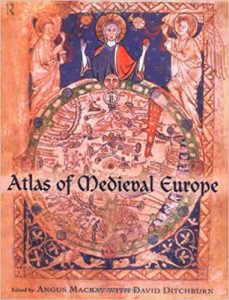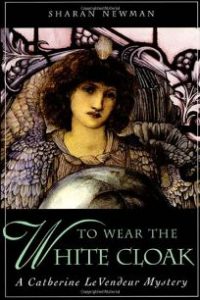
2019 Library Reading Challenge
4 February 2019
Interview with Penelope Fletcher of the Red Wheelbarrow Bookstore
12 February 2019The Library is pleased to present the Culture Picks for the month of February, curated, researched and written by Library volunteer Mike Duffy.
T. S. Eliot wrote that April is the cruelest month, but he may not have spent a February in Paris when the skies are gray, snow and rain may fall, and museums are between major exhibitions. One could (and should) visit the permanent collections of the city’s great museums now when the crowds are thin, but this month’s Culture Picks by Mike Duffy offers three additional opportunities to delve into different aspects of Paris. Two are remains of the Medieval city: Tour Jean Sans Peur presents educational exhibits in a 600-year-old tower built as part of a private home and the Collège des Bernardins shows marvelous contemporary art in its exceptional 700-year-old monastic space. Additionally, Galerie Gallimard displays rarely seen drawings, manuscripts and memorabilia of Antoine Saint-Exupéry, author of the much-loved The Little Prince. Two of these (Gallimard and Bernardins) are free of charge as one has commercial goals and the other religious. All three can brighten any day in the middle of winter.
As always, we’ve selected books from our collection to go with the cultural visits. These books are displayed in the Members’ Lounge and available to be checked out.
Guest blogger: Mike Duffy lives in Paris following his retirement from a career in university teaching and management. He spent his first 30 years in Pennsylvania (born in Pittsburgh, college and grad school in Philadelphia), then spent a bit more than that in California where he taught accounting and finance at the Universities of California (Berkeley), Southern California and San Francisco. He can now be found in art museums, historic sites, and concert halls throughout the city.
ANTOINE DE SAINT-EXUPÉRY—WIND, SAND AND STARS, DRAWINGS AND MANUSCRIPTS
GALERIE GALLIMARD
Through 2 March 2019
Galerie Gallimard brings to Paris the dreams, death-defying experiences and deep humanity of Antoine de Saint-Exupéry through a compact exhibition of drawings and manuscripts. Those who know The Little Prince, his most famous work, or any of his other outstanding, true tales of adventure as an ace pilot in the earliest days of aviation will feel the echo of the promise of the Little Prince: “You will always be my friend.”
The drawings on display are charming, filled with tenderness, a bit whimsical and a bit sad. They present love, friendship, loneliness and loss, the great existential themes Saint-Exupéry’s work and a final, if unintended, post-script to the author’s searching life. For years Saint-Exupéry (1900 – 1944) doodled a young, tossle-haired boy staring out at the stars, imagining what is out there, yearning to be part of something bigger, grander, more exciting, and through that, perhaps, learning deeply about life. He drew plants and trees sprouting stars in the margins of notebooks, linking the earth and the heavens. While the beautiful watercolor-washed little boy sitting atop the globe watching the sunset, prepared for the first edition of The Little Prince in 1943, shows skillful artistry, it is the 11 simple black and white drawings that are the main event of this exhibition. Beginning with childlike wonder and innocence, these sketches trace the dawning awareness of pain and loss which accompany growing up, a transition Saint-Exupéry thought cruel. He gave these to an intimate friend in New York after penning the text and drawings for The Little Prince and planning his return to North Africa to fly, he hoped, to help free France from Nazi tyranny. Melancholy becomes the dominant note, but you can see that he still wants to be believe, as the book teaches, “One sees clearly only with the heart.”
For Antoine de Saint-Exupéry life was a heady mixture of thrill-seeking, writing and reflecting, seeking companionship and love, finding sadness and depression. He faced the world, seeming fearless, but, in fact, recognizing that the excitement he sought came through extreme risk-taking. He chose to be a pilot, to soar amidst his beloved stars, but he survived, damaged, crashes and accidents. As was the case for many early flyers, he piloted mail, first from France to Africa, then to South America, and he recounted these adventures in articles and books which made him a celebrated author and hero in France (and are worth reading today). The story of his plane crash in the North African desert while trying to win a contest to fly to Viet-Nam and his totally by chance escape from death by dehydration catapulted him to even greater fame. He found himself at a loss, however, when his marriage was in shambles and age and injuries rendered him ineligible to fly in World War II.
Amidst the flights, the feats, the fears, he found early love (reflected here in manuscripts of stories and poems written for his first fiancée), late love (reflected in the drawings on display), friendship (shown in the letter he drafted the night before his final flight noting he will have no regrets if he doesn’t return). The displays demonstrate his heavy editing. He cut, for example, the original manuscript of The Little Prince from 30,000 to 15,000 words and the drawings were likewise pared to half those first prepared. He, in fact, worked on his writing as hard as he worked on his flying. He used his influence as a French hero to gain permission to fly 5 reconnaissance flights and he never returned from his typically rule-bending 9th mission. Was his plane shot down by Nazi flighter pilots? Did his plane develop mechanical problems? Did he commit suicide in the face of depression and the prospect of life without the thrills of youth? Each of these explanations has had proponents but none is proven.
The Little Prince, one of the top 4 best-sellers of all time, continues to reach far beyond what could have been imagined when his New York publisher’s wife asked Saint-Exupéry to write a children’s book to answer a competitor’s success. Over 200 million copies have been sold in 300 languages. (300? including Brazilian tongues spoken by only a few people) and the book continues to sell 2 million per year. By its 75th anniversary in 2018, The Little Prince had appeared in movies, videos, an opera, recordings (including one voiced by Richard Burton and Jonathan Winters), a theme park, as well as on t-shirts, coffee mugs and even in a themed highway rest stop. It is a cult classic in Japan and has appeared in more than 100 editions in Korea. Ostensibly a children’s story, The Little Prince captivates people of all ages with its wistful, earnest message.
Galerie Gallimard offers rarely seen, privately-owned drawings, manuscripts and memorabilia illustrating Saint-Exupéry’s life of exhilaration and heartbreak. Saint-Exupéry rode with the wind, above the sands and into the stars and this exhibition invites us to join him on those journeys.
Recommended books from the Library collection:
VINCENT FOURIER—TRACE AND WITNESS
COLLEGE DES BERNARDINS
Through 2 March 2019
Trace et Témoignage, the title of an exhibition of outstanding contemporary works by Vincent Fourier, might be translated Traces and Witness or Hints and Evidence or some combination of the ideas behind these words for these are the works of someone searching for and seeing the existence of God. One need not share Fourier’s beliefs, however, to appreciate the artistry on display in figurative and abstract works or to revel in the beauty of the spaces of the Collège des Bernardins, but understanding the goals of the artist and the Collège helps place the experience within very rich traditions. The contemporary incarnation of the more than 700-year-old Collège encourages dialog and discussion of current issues among believers and others through lectures, courses, events including music and art exhibitions and Fourier works to communicate his deep Catholic faith through his art. Although the paintings have religious titles, there is no preaching or proselytizing; instead there is hinting or witnessing, welcoming all to share one person’s experience of transcendence.
The art displayed, particularly the abstract works, are quiet, meditative, and very simple in materials and style. With a limited palate of shades of brown, some green and blue, small bits of ochre, Fourier’s abstractions convey a surprising warmth in combinations of oil, watercolors, tempera and ink. Each of the Stations of the Cross on the right as you enter the exhibition space, for example, is recognizable if you know the story line, but each is also a beautiful piece and together they move the viewer through a known story or one that may be hinted at obliquely. There is a large portfolio in the center of the room in which you can find additional paintings on paper that would shine amidst any exhibition of 20th or 21st Century abstraction with reminiscences of Klee or even Matisse.
The Collège des Bernardins provides magnificent, dramatic public space for this and other exhibitions, space that was constructed more than 700 years ago as part of the effort to connect monasteries to then-novel institutions called universities. From 1248 to 1789, the Collège housed monks, students and professors, from all over Europe and played a major role in the life of the University of Paris. After the French Revolution, the monk’s many buildings were sold or housed government entities. Now from the street, the long march of buttresses supporting the remaining building is itself worth a look. These have stood here for 7 centuries and only suggest what you will see inside. You enter a truly massive space, more than 220 feet long, 45 feet wide and nearly 20 feet high, the ceiling held up by 32 surprisingly thin columns and wonderful vaults. When originally used, this space was partitioned for many different purposes (preparing meals, eating, sleeping, studying), but now it is awe-inspiringly open, simply beautiful, the simplicity being a hallmark of the architecture of the Carthusian religious order which organized the Collège. (How could it have housed a unit of the Paris fire department from 1845 to 1995?)
The second space in a spare Gothic style with a nearly 36 feet high ceiling hosts the art exhibition and was a sacristy for a church which was started 680 years ago, was bigger than Notre Dame, never finished and demolished to build several streets in the 19th century. There is a fine memorial stone in the floor put in place in 1306 after the death of Gunther, one of the monks from across Europe who lived here and who inspired one of the works in the art exhibit. In 2001, the Catholic church in Paris bought the buildings from the City, rehabilitated and opened them to the public for the first time in their history in 2008. These spaces, the remains of a major monastic community and center of learning, alone are worth a visit and other rooms which are not open to the public can be visited on tours offered by the Collège.
The Collège des Bernardins invites people of all faiths or no faith to participate in what it sees as the continuation of the role of these buildings to bring people together to learn, to explore, to understand culture, to experience the arts, to be deeply involved in intellectual, spiritual and civic life. The buildings and the exhibition of Vincent Fourier’s meditative paintings give witness to this work which builds on the earliest goals of this remnant of the Middle Ages which is once again a vibrant part of the city.
Recommended books from the Library collection:
FESTIVALS OF THE MIDDLE AGES
TOUR JEAN SANS PEUR
Through 5 May 2019
“Learn about life in the Middle Ages,” that’s the invitation of the Tower of Fearless John as Jean sans peur would have been known in England, whose ally he was against the French king in the early 15th century. The only remaining portion of a large Paris compound of the Dukes of Burgundy, the Tower offers education through permanent and temporary exhibitions which take you into a world 5 or 6 centuries past. It is an interesting surprise in Paris’ Second Arrondissement.
The weekly and seasonal, religious and civic, personal and communal festivals of the Middle Ages are the focus of the current special exhibition. They are presented through poster-like displays, each with text and a reproduction of a Medieval painting, drawing or manuscript. (Ask for an English language version of the texts at the ticket counter.) You can enjoy and learn from this exhibition by reading all of the texts or “reading” the pictures. From the texts, you see how the Christian church refashioned already existing festivals to help its faith permeate the lives of the largely illiterate populations. In 324, for example, the Pope decreed that the day to celebrate Jesus’ birth was December 25, then the winter solstice and a celebration of the birth of the sun by those who worshipped Mithra. Similarly, celebrations of marriage which had been purely civil contracts between families became sacramental around the 12th century. The celebrations of births and deaths, of planting and harvesting, of coronations of kings, of patron saints of cities, towns and guilds evolved to include or be dominated by religious elements, while some other very old customs remained what was called “pagan” and involved cockfighting or decapitating birds. If you mostly look at the pictures, you see a lot of dancing, mostly in groups as dancing in couples didn’t evolve until the 15th century; a lot of eating; religious and royal processions; and clothing and customs of the times. You get the idea that there were a many communal and familial celebrations, which for most people were outdoors as there were no large enclosed spaces except for nobility or in the cathedrals. Life in the Middle Ages was short and hard, and festivals provided fun and distraction to make everything a bit more bearable.
In five storeys, there are displays in French and English describing the warring factions and what life might have been like for Fearless John, his family and retinue. The tower may have been built as a secure space to flee from attackers, as private areas to conduct meetings or to provide a bed chamber for the Dukes. The explanations describe the furniture, clothing and habits of the aristocracy of the 15th century and the building itself includes what are among the very earliest in-house toilets in Paris. Before heading up the stairs, you can gain a helpful overview of Medieval Paris through a presentation on a wall in the courtyard.
Tour Jean sans peur offers learning for adults and children, games in English and French for those up to 12 years of age, and lots and lots of steps to climb. Those with mobility issues might be able to visit the courtyard and temporary exhibition on the lower level (down a few steps), but the rooms above ground level and the fantastic ceiling are accessible only by a lot of not really friendly stairs. With that caution, a visit to this relic of the Middle Ages is a good choice for a February day or, really, any day when you want to dip back through the centuries to another time in the life of Paris.
Recommended books from the Library collection:


















